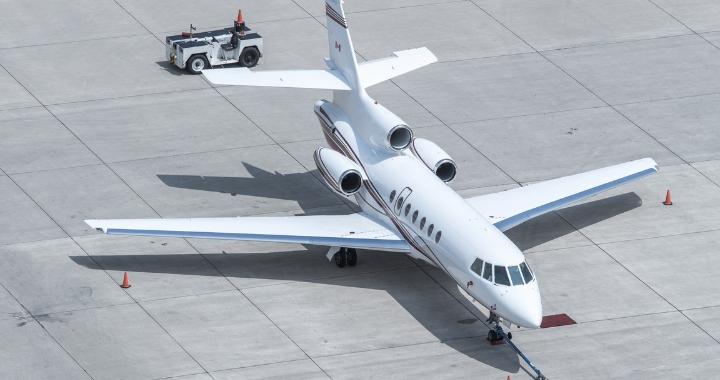Arriving at the airport of your destination after a long flight can be a mix of relief and anticipation. It’s that moment when you begin to feel a sense of restlessness, eager to disembark and get traveling or simply leave the airport. After a plane lands, several important steps and processes unfold before you can exit the aircraft.
In this post, we’ll dedicate our discussion to answering a common question: How long does it take to deplane? We’ll explore the factors that influence this wait time and what passengers can do while patiently awaiting the opening of the cabin door.

How Long Does It Take To Deplane?
The amount of time it takes for a plane to empty its passengers is influenced by various factors. In this section, we’ll dissect the intricacies of the deplaning process, shedding light on why it can sometimes stretch beyond the anticipated time frame.
As the aircraft touches down and taxis to its designated gate, a carefully coordinated sequence of events unfolds. Ground crew members prepare for the plane’s arrival, while gate agents liaise with the cabin crew to initiate the deplaning process. The doors are opened, and passengers begin to disembark via the jet bridge, which can accommodate a limited number of people at a time. Baggage handlers are hard at work unloading checked luggage, adding another layer to the process. The intricacies of this choreography can lead to variations in deplaning times.
The size of the plane also plays a significant role; smaller planes tend to empty more swiftly than larger ones. With a general rule of thumb, a smaller plane may take about 15-20 minutes to deplane passengers, while a larger plane could extend to 30 minutes or more. International flights may involve additional customs and immigration procedures, increasing wait times. Connecting flights can also put time constraints on passengers, who must expedite their deplaning process to make their next flight.
As you can see, there are many factors at play!
What Is Deplaning?
Deplaning refers to the process of passengers exiting an aircraft after it has landed and reached its designated gate at the airport. It is a crucial phase of air travel, during which passengers disembark and continue their journey either within the airport terminal or to their final destination. Baggage handlers also start unloading checked luggage from the cargo hold while passengers make their way toward baggage claim or connecting flights. This phase can be smooth and quick or involve extended wait times, depending on various factors.
After an aircraft lands, the deplaning process kicks into action. The plane taxis to its assigned gate, where ground crew members and gate agents begin preparing for the arrival of passengers. The cabin crew opens the aircraft doors, initiating the process of passengers leaving the plane. Passengers exit through the jet bridge, which connects the aircraft to the airport terminal, or through mobile stairs for remote stands.
Several factors come into play, determining whether deplaning occurs swiftly or takes more time than expected. These factors include the size of the aircraft, whether the flight is international or domestic, passenger volume, customs and immigration procedures, and the presence of connecting flights.

Average Time To Deplane
The average time it takes to deplane can vary significantly between private jets and commercial aircraft, primarily due to differences in size, passenger volume, and the nature of the flight.
Commercial aircraft, such as those operated by airlines, typically carry a larger number of passengers than private jets. The deplaning process for commercial flights involves several stages, including opening the cabin doors, passengers disembarking through the jet bridge, and the unloading of checked baggage.
After the door opens, passengers disembark via the jet bridge. The average time for passengers to deplane from a commercial flight can range from 15 to 30 minutes, depending on factors such as the size of the aircraft, the efficiency of the airline’s procedures, and any additional delays related to customs and immigration for international flights.
In contrast, private jets are smaller in size, faster, and typically carry fewer passengers. (More on how fast private jets fly..) This reduced passenger volume results in a quicker and more streamlined deplaning process. On average, passengers can expect to deplane from a private jet in as little as 5 to 15 minutes, making it a significantly faster and more convenient option for those seeking efficiency and privacy in their travel.
Though private jets offer a faster deplaning experience, they may still require some additional time for bag handling and transportation to the final destination. This is especially common for international flights. However, overall the reduced wait time for deplaning is one of the advantages that many travelers appreciate when choosing private jet travel. (Not sure how this works, check out our post: Do Private Jets Land in Public Airports).

Deplaning Etiquette
Practicing deplaning etiquette is essential to ensure an orderly and efficient exit for all passengers. Let’s explore some important etiquette tips for different scenarios:
When you have carry-on bags.
If you have carry-on bags in the overhead compartment, remain seated until it’s your turn to retrieve them. Rushing to the aisle while others are still deplaning can cause unnecessary congestion. Once you’re in the aisle, swiftly gather your belongings and move towards the exit. Avoid stopping in the aisle to rearrange your bags.
When you don’t have carry-on bags.
If you’re traveling light and don’t have carry-on bags to retrieve, consider allowing passengers with overhead luggage to exit ahead of you. This helps prevent bottlenecks in the aisle.
When traveling with kids.
If you have children, make sure they are ready to exit the plane. Have their items (toys, blankets, snacks) organized and within reach to minimize delays. You should also try to use child-friendly safety protocols. If your child is in a car seat or stroller, be considerate of other passengers and fold or collapse it efficiently to clear the aisle promptly.
Where you are seated.
If you’re seated by the window, be courteous to others by allowing those in the aisle or middle seats to exit before you. Don’t block the way. If you’re in an aisle seat, stand up and move into the aisle promptly once the row ahead begins to deplane. Avoid staying seated when there’s space for others to pass.
Assist others.
If you see fellow passengers struggling with heavy bags or young children, offer assistance if you can do so safely and without causing delays. While helping, be mindful of personal space boundaries and avoid intruding on someone’s comfort zone.
Always maintain a calm demeanor.
Even if you’re in a hurry, maintain patience and stay calm. Rushing or becoming agitated can disrupt the deplaning process and create unnecessary tension.
Follow crew instructions.
Pay close attention to announcements and follow the instructions of the flight attendants. They are trained to ensure a safe and efficient deplaning process.
The time it takes to deplane can vary significantly based on several factors.
While there is a general rule of thumb for deplaning times, it’s important to be patient and plan accordingly. Keep in mind that deplaning is just one step in the process of leaving the airport. Practicing these deplaning etiquette tips can help create a more organized and pleasant experience for all passengers. Remember that a little consideration and courtesy go a long way in ensuring a smooth exit from the aircraft, making the end of your flight as comfortable and stress-free as possible.
For more information on all things aviation from the best aviation organizations around to how to calculate landing distance, check out our blog. While you’re at it, check out our varying options of Jetbeds to see which perfectly fits your plane.

